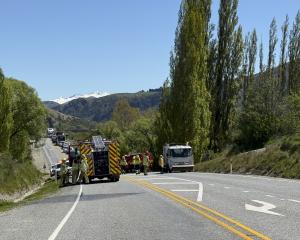More consultation will be done with general aviation operators in Queenstown before the Civil Aviation Authority reclassifies the airspace.
Last month the authority announced it would change Queenstown Airport's controlled airspace from Class D to Class C, giving it more air traffic control management and allowing less self-management by pilots.
It will also mean an increase in separation requirements between aircraft.
The decision had been driven, in part, by the growth in the numbers of larger, predominantly jet, aircraft in and out of Queenstown Airport in recent years and also aimed to ensure continued safety for all users.
However, the change could have an impact on the general aviation (GA) community, particularly fixed-wing operators flying to and from Milford Sound.
Milford User Group chairman and and Air Milford owner and chief pilot Hank Sproull said the reclassification would probably require a change in flight paths and mean general aviators would be forced into holding patterns awaiting clearance, which would slow down traffic and potentially have an impact on their bottom line.
However, CAA spokesman Mike Richards said it was not a "blanket change''.
"The main concern appears to be around the lower operating heights of the arrival procedure for flights returning from Milford Sound.
"These are required to ensure there are no ‘close encounters' with other airspace users and the reduced heights only apply when larger passenger aircraft are in the same vicinity under certain conditions.''
CAA and Airways, the regulatory body for the authority, met users in Queenstown last week to discuss developing GA-specific flight paths to ensure appropriate separation from jet aircraft, while minimising delays and reducing the need to hold aircraft.
This week Airways senior communications adviser Angela Lamont said more consultation was on the way for operators, beginning in April, aiming to meet the CAA deadline for implementation.
Last month Aeronautical Services manager Sean Rogers said the reclassification would occur by November, coinciding with the promulgation date of the visual navigation charts update.
Mr Sproull believed the process would be "fairly rushed''.
"There's a few things to be sorted yet, but it just seems like there's a lot of pressure to get it all done and dusted.
"They have to come up with a flight path that we have to discuss to make sure it's going to be suitable for what we're going to be doing.
"At the moment it's not, so there's got to be a bit of work done.''
Mr Richards said feedback to date had been noted and consultation was now focused on "the best way to make this work for all concerned''.
"Airways are making changes to the air traffic management procedures to lessen the effect on operators where possible.
"CAA are not developing these, but provide regulatory oversight.
"It has been two years since this airspace review was initiated. We consider this to be a fair and reasonable amount of time.''
Mr Richards said it was important for operators to understand in ‘‘some situations'' air traffic control would be able to show ‘‘some flexibility'', based on stakeholder feedback.
However, in the majority of cases it would be bound by regulatory and aviation safety requirements.
‘‘Aviation safety is not and has never been negotiable.‘‘Both the flying public and New Zealand trust us to make sure we maintain safe and secure skies.''












